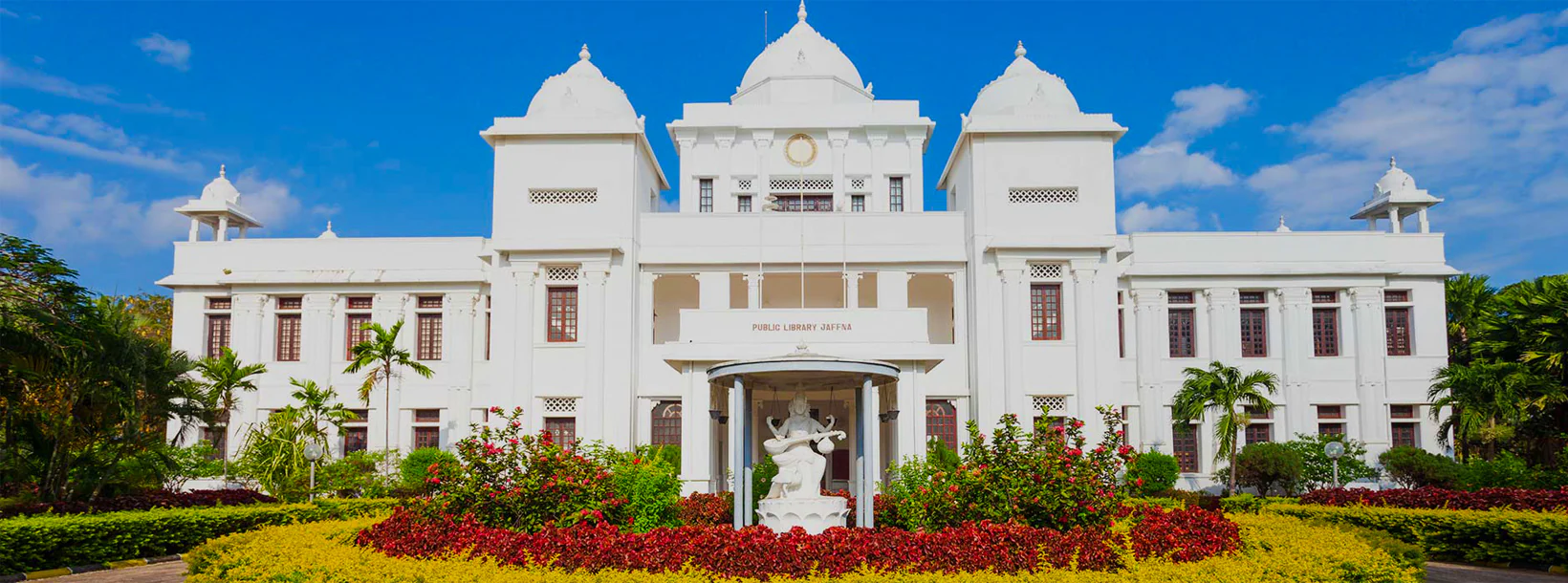

Jaffna City
Jaffna is the main city of Jaffna peninsula in the northernmost district of Sri Lanka. Comfortable intercity busses from Colombo take 10-12 hours to reach the city of Jaffna.
ニラヴァライ 底なしの井戸
ニラヴァライの井戸は、ヴァリカーマム東部地区のナヴァッキリ GS エリアのプトゥルにあるジャフナの人気観光スポットです。底なし井戸または深井戸と呼ばれることもありますが、この井戸は上層の崩壊によって生じ、地下水源につながる鍾乳洞が露出します。この井戸はひどい日照りでも涸れることがなく、周辺の農家がその水を利用していると言われています。井戸の寸法は長さ 25 フィート、幅 40 フィートです。この地域にある多くの大規模な公共井戸と同様に、階段を上がると水面は地表から 14 フィート下になります。
井戸の最初の40フィートの水は新鮮で、さらに下に行くと塩水になると言われています。この水源はキーラマリ淡水プールにつながっていると考えられており、井戸に投げ込まれたライムの実がこの井戸から10キロ離れたキーラマリの海に現れると言われています。
また、海の干潮と満潮に合わせて井戸の水位が上下すると言われています。残念なことに、2009 年にこの国のこの地域で終結したタミル・タイガー・テロリストとの 30 年にわたる血なまぐさい戦争のせいもあり、この井戸に関する研究は行われていません。幸いなことに、この奇妙な井戸の研究は 1800 年代を念頭に置いて行われ、2009 年に出版されました。英国王立アジア協会セイロン支部ジャーナルの 1865 ~ 66 年版。
淡水がどの深さで海水に変化するかを確認するために、バルブ付きの特殊な器具を使用して水深 45 フィート、95 フィート、および 145 フィートで水のサンプルを採取し、密封しました。これらのボトルは内容物の化学分析のためにイギリスに送られました。テスト中に、井戸は明らかに底なしではなく、145〜150フィートの深さで底に達していることが判明しました。底から持ち込まれた水のサンプルからは、強い硫化水素の臭いがすることが観察されました。また、汽水域が深さ 40 ~ 50 フィートの間で始まっていることも観察されており、この高さで塩水が井戸に流入していることは確実です。
次の実験では、3人の研究者が午前6時から午後6時まで30分ごとにジャフナ・ラグーン、ヴァルヴェッティスライ海、ニラヴァライ井戸の水位を測定した。これらの測定結果は、ヴァルヴェッティトゥライとニラヴァライの海面が午前6時30分に下がり始め、午後2時から2時30分頃に上昇し始めたことを示しています。しかし、ニラヴァライ井戸の水位は6時半に海と平行に下がったが、午前9時半に上がり始め、午後2時過ぎには再び下がった。これは、井戸の水位が 1 日に 3 回変化し、潮の満ち引きが 1 日に 2 回変化することを意味しました。したがって、井戸の水位の変化と海の潮汐との関連性は否定され、井戸の水位が毎日 3 回変化する理由は未解決のままとなった。
最近(150年後)、スリランカ海軍の潜水士を乗せた自動潜水ロボットが井戸の底への調査を実施した。彼らは、井戸の底が 52.5 メートル (172 フィート) あることを発見しました。また、最初の 18.3 メートル (60 フィート) には淡水が存在し、下に行くにつれて塩水に変化することも発見されました。彼らはまた、さまざまな高さでさまざまな方向につながる多数のトンネルと、井戸に落ちた3台の荷車の破片も発見した。
ニラーヴァライという地名は、地名と地下水源を結びつけて、ニラヴァライ (Nila+a'rai: 地下室) から来たのではないかとよく推測されます。この井戸は常に Nilaavaraik-ki'na'ru と呼ばれます。
しかし、この地名は、この地域に豊富に存在する自然植生ニラーヴァライに由来する可能性が高い。
数十年前、ニラーヴァライの場所から石灰岩から彫られた優雅な仏像のトスロが発見され、この場所が考古学的に強力であることを示しています。ナヴァッキリという地名は仏教遺産と関係がある可能性があります。像の発見場所からそれほど遠くないところに、10 世紀のものと思われるダガバの遺跡があります。近くには、イメージハウスであった可能性のある長方形の建物の遺跡もあります。現場には棒の木と深い井戸が見られます。
この井戸は人気の場所ですが、周囲をセメント壁で囲っている以外は整備されていません。雑草が生い茂り、水は古く、風呂にも適さない。
About Jaffna District
Jaffna is the capital city of the Northern Province, Sri Lanka. 85% of the populations of the Jaffna and Kilinochchi districts are Hindus. The Hindus follow the Saivite tradition. The remainders are largely Roman Catholics or Protestants, some of whom are descendants of colonial settlers, known as Burghers. The Tamils are divided along caste lines, with the farmer-caste Vellalar forming the majority. Sea products, red onion, and tobacco are the main products in Jaffna.
Jaffna is home to beautiful Hindu temples. An Old Dutch Fort still stands well preserved within which is an old Church. Another example of Dutch architecture is the King's House. No visit to Jaffna is complete without tasting the exquisite Jaffna mango, reputed for its sweetness. About 3 km away is the majestic Nallur Kandaswamy Temple, home to the largest religious festival in Jaffna. The Kayts Harbour is an ancient ship docking site in the Jaffna region.
About Northern Province
The Northern Province is one of the 9 provinces of Sri Lanka. The provinces have existed since the 19th century but they didn't have any legal status until 1987 when the 13th Amendment to the 1978 Constitution of Sri Lanka established provincial councils. Between 1988 and 2006 the province was temporarily merged with the Eastern Province to form the North-East Province. The capital of the province is Jaffna.
Northern Province is located in the north of Sri Lanka and is just 22 miles (35 km) from India. The province is surrounded by the Gulf of Mannar and Palk Bay to the west, Palk Strait to the north, the Bay of Bengal to the east and the Eastern, North Central and North Western provinces to the south.The province has a number of lagoons, the largest being Jaffna Lagoon, Nanthi Kadal, Chundikkulam Lagoon, Vadamarachchi Lagoon, Uppu Aru Lagoon, Kokkilai lagoon, Nai Aru Lagoon and Chalai Lagoon.Most of the islands around Sri Lanka are to be found to the west of the Northern Province. The largest islands are: Kayts, Neduntivu, Karaitivu, Pungudutivu and Mandativu.
The Northern Province's population was 1,311,776 in 2007. The majority of the populations are Sri Lankan Tamils, with a minority Sri Lankan Moor and Sinhalese population. Sri Lankan Tamil is the major language spoken in the province by the vast majority of the population. The other language spoken is Sinhala by 1 percent of the population. English is widely spoken and understood in the cities.




















